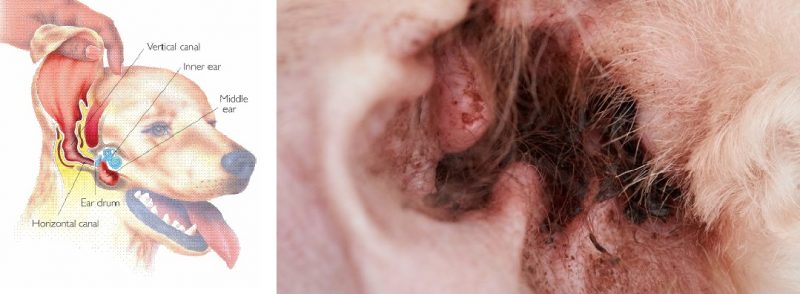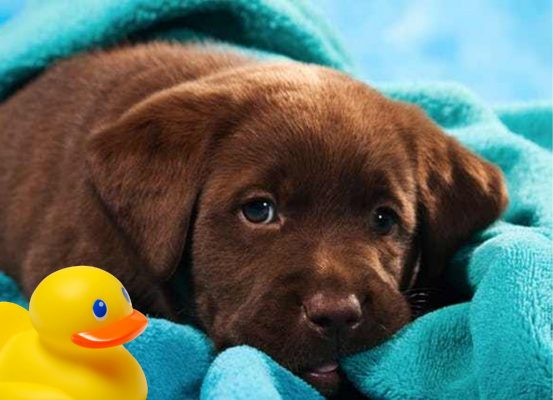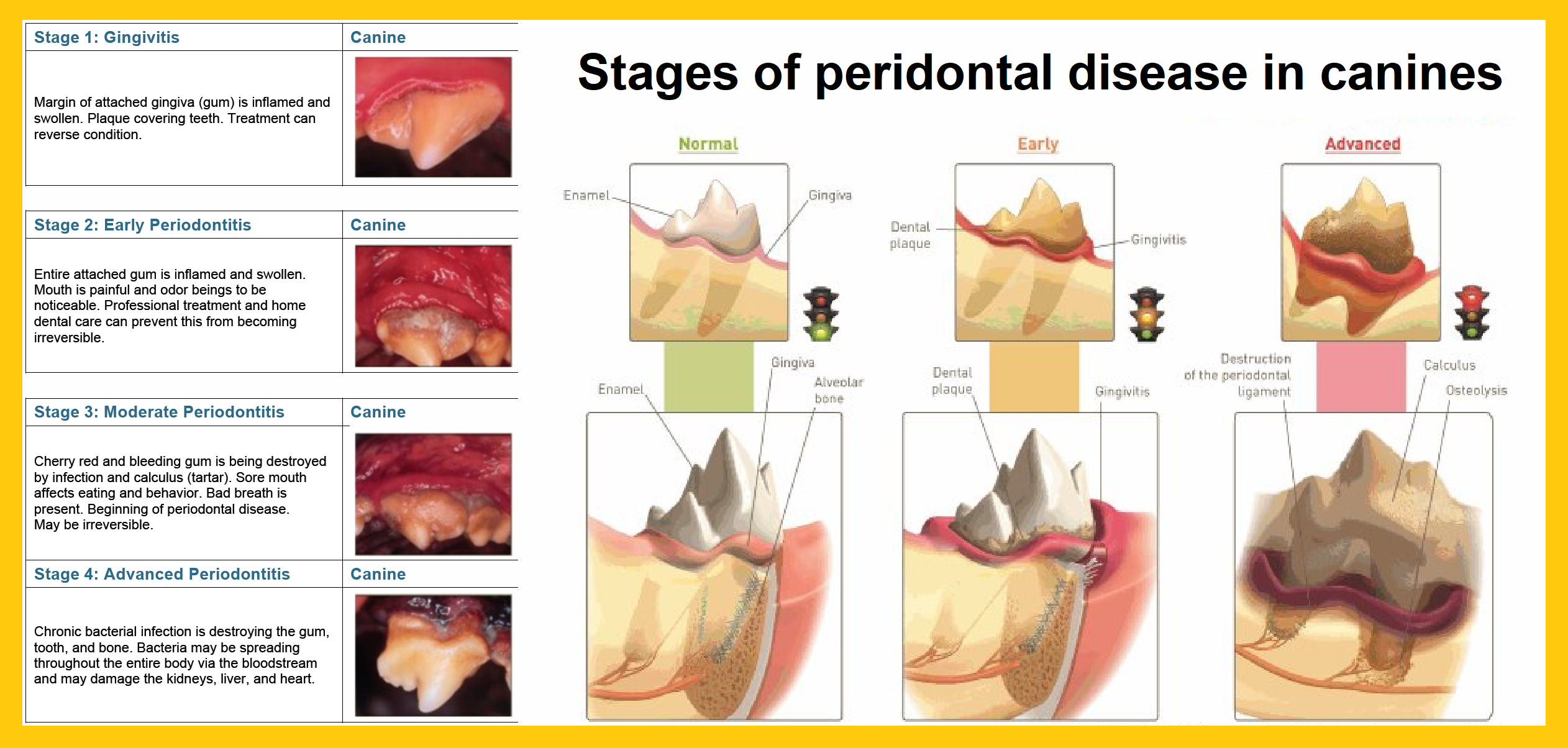Coat, skin and brushing
Labradors have a short, dense, weather-resistant ‘double’ coat, with natural oils for skin protection. Their ‘double’ coat means they have a glossy waterproof outer coat and a dense warm undercoat designed to keep them warm in cold weather and water.
Most dogs shed or moult their coat twice per year: before winter (to grow a thicker warm coat) and in spring (to grow a sleek coat for summer). For dogs living indoors, where the temperatures are more consistent, the moulting can somewhat occur all year round.
A nice brush twice a week is recommended. Brushing helps remove dirt and loose hair, especially when moulting. A Furminator brush might help during heavy moulting, but otherwise use a normal brush. Be careful the brush isn’t too scratchy or it will damage their skin. Don’t brush overly hard with the Furminator, as it is scratchy.
Check the condition of his skin. If you notice it is dry and flaky, talk to us, we can provide advice. It may be dandruff, which can be environment-related, diet-related (most common), or what bathing products are used. Diet really is the key to healthy coat and skin.
Types of brushes we use:
Bathing your puppy
While some dogs do not like to bath, labradors love water! So, it’s no surprise that bathing them usually is not difficult.
We like to bath about every 2-3 months: at least once each season, or four times per year.
The odd additional bath is thrown in if they get particularly muddy, salty from sea water, or roll in something stinky on the farm.
Dogs who eat healthy diets do not get that ‘doggy smell’ so do not need bathing often.
Over-bathing results in detrimental skin conditions, including dry flaky and itching skin, dandruff, eczema, and rashes.
Get your lab used to a bath or shower.
There are four places you can opt to use: bathroom (shower or bath), outdoors washup area (with warm water), dog wash, or groomer.
- Bath or shower area – Short supervised play sessions in the bathroom, having removed all chemical, electrical items, and razors (we had a dog chew up a razor, blades and all once, pure luck he did not swallow it), to safe places up very high or locked, is a good way to get him used to the bath area as a pup.
- Outdoor washup areas need to have at least lukewarm water available, a cold bath isn’t nice even for a dog as you are pushing water through their normally-waterproof coat directly to their skin. They can get a chill.
- ‘Dog washes’ can also be used. I would recommend taking some disinfectant spray and wash the trough out before bathing your dog there.
- Groomers have lovely bath products and warm baths for dogs and generally do a ‘pawesome’ job! However, you can easily bath your own dog without the expense of a groomer.
Nail care
Your labrador should have his nails clipped about every 1-2 months. Nail growth rate depends on the types of surfaces the dog has been walking and playing on, or if he likes to dig.
You can learn to clip his nails yourself, or alternatively a vet or groomer can do this.
Get him used to having his paws handled very young. Touch, rub and lightly pinch his paws and toes often.
Though it’s not painful (unless you cut too much off), it’s not a pleasant sensation having nails clipped and some dogs freak out at this, so it’s important to let a professional do it right or show you how to do it right. Don’t clip until you know for sure you have the right angle and depth.
To start out, each clip of the nail gets an immediate food treat and praise until he thinks, ‘Oh this isn’t so bad!’ I usually like to clip, then lightly file the nails to take off any sharp edges.
Do not let the nails become overgrown. Overgrown nails can be painful, change his walking gait, change the shape of the nail and paw, and become more difficult to trim.
Nails have their own blood supply – the ‘quick’ of the nail. If you cut his nails too short the ‘quick’ will bleed. Apply pressure with a cold wet cloth and always keep some Styptic powder handy for application to stop the bleeding.
With puppies, you can use a human fingernail clipper. Once his nails no longer fit in these clippers, get some dog clippers.
Ears
Check your labrador’s ears twice per week (when you brush him) or more often to make sure they are healthy. Labradors are prone to yeasty ear infections because of poor air circulation to those floppy ears.
Signs of ear infections are red or swollen ears, a nasty odour, or dark waxy discharge.
If they get an ear infection, check with the vet what eardrops to use.
We found EpiOtic ear ointment to work.
More serious signs of infection are digging at his ears, shaking his head a lot, or loosing balance. In this case, go to the vet immediately as this is an emergency.
Chronic ear infections can cause burst eardrums and hearing loss.
Kefir and natural yoghurt are good sources of probiotics to help prevent ear infections. Since we started using Kefir, we have never had an ear infection again. It really does work.
Regularly clean your puppy’s ears with a soft cloth so he gets used to his ears being inspected and touched. Be very gentle, as the inside of the ear is very delicate.
Lift the ear to inspect: What an ear infection might look like:

Teeth
Teeth need to be kept free of plaque and tartar – they should be nice and white, with pink gums.
Healthy teeth can be maintained by chewing on raw bones such as soup bones/ribs, and air-dried cartilage or tendons. Never ever give cooked bones which can be fatal.
Though we are fans of natural options, dentabones could also be used.
Avoid rawhides – these are filled with glues and chemicals in the preparing process.
Brushing their teeth may be necessary if dental health is not adequately maintained through natural chewing. Do not use human toothpaste.
You can gradually get him used to having his teeth brushed. Starting young as a puppy, by rubbing your finger around his gums and over his teeth is a good way for him to get used to the sensation. Graduate to a finger-brush and then soft tooth brush when ready.
Around 5-6 months old, the puppy will lose his baby teeth and his adult teeth will appear. Monitor that all his baby teeth do fall out – on an odd occasion a tooth may need to be removed by a vet if it does not fall out by itself. During teething, he will be more prone to biting and chewing. Like a child, give him things to chew on to help his teeth come through and soothe his gums. Do not allow biting on humans.
Normal healthy teeth:

Dental disease in dogs:




